NRHP Reference # 00000364 Opened 1940 | Built 1940 CHISL # 1032 Added to NRHP 28 April 2000 | |
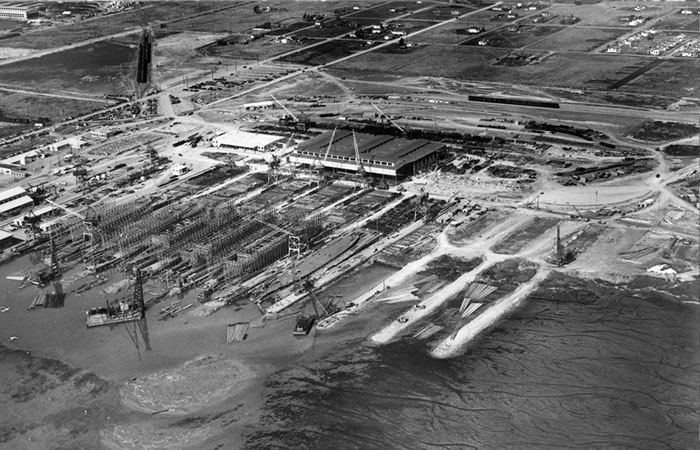 | ||
Similar SS Red Oak Victory, Brooks Island, Rosie the Riveter/World War II Ho, The Brothers, San Francisco Bay Natio | ||
The four Richmond Shipyards, located in the city of Richmond, California, United States, were run by Permanente Metals and part of the Kaiser Shipyards. During World War II, Richmond built more ships than any other shipyard, turning out as many as three ships in a single day. The shipyards are part of the Rosie the Riveter/World War II Home Front National Historical Park, whose Rosie the Riveter memorial sits on the former grounds of Shipyard #2. Shipyard #3 is listed on the National Register of Historic Places.
Contents
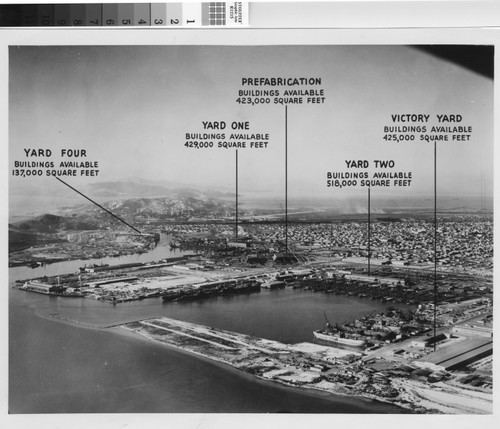
Richmond shipyards
History
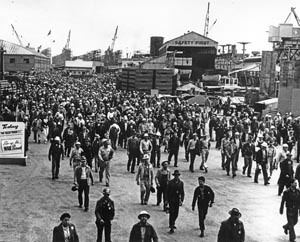
Henry J. Kaiser had been building cargo ships for the U.S. Maritime Commission in the late 1930s. When he received orders for ships from the British government, already at war with Nazi Germany, Kaiser established his first Richmond shipyard in December 1940.

The four Richmond Kaiser Shipyards built 747 ships during World War II, a rate never equaled. Compared to the average ship built elsewhere, Richmond ships were completed in two-thirds the time and at a quarter of the cost. The Liberty ship SS Robert E. Peary was assembled in less than five days as a part of a competition among shipyards. By 1944, the yard routinely needed only a bit more than two weeks to assemble a Liberty ship. By the end of the war the Richmond Shipyards had built $1.8 billion worth of ships.
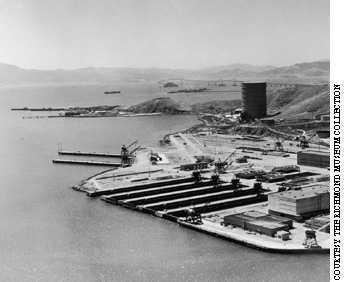
Kaiser and his workers applied mass assembly line techniques to building the ships. This production line technique, bringing pre-made parts together, moving them into place with huge cranes and having them welded together by "Rosies" (actually "Wendy the Welders" here in the shipyards), allowed unskilled laborers to do repetitive jobs requiring relatively little training to accomplish. This sped up construction, allowed more workers to be mobilized, and opened jobs to women and minorities.
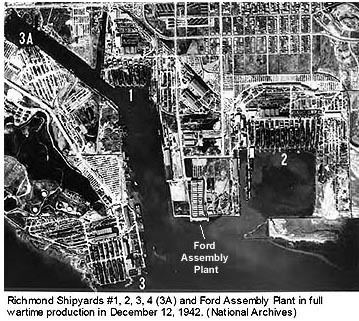
During the war, thousands of men and women worked in this area in hazardous jobs. Actively recruited by Kaiser, they came from all over the United States to swell the population of Richmond from 20,000 to over 100,000 in three years. For many of them, this was the first time they worked, earned money, and faced the problems of working parents: finding day care and housing.
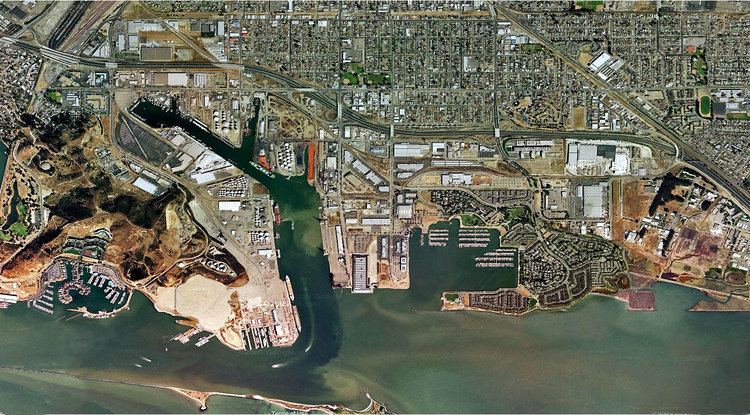
Women and minorities entered the workforce in areas previously denied to them. However, they still faced unequal pay, were shunted off into "auxiliary" unions and still had to deal with prejudice and inequities. During the war, labor strikes and sit-down work stoppages eventually led to better conditions.
Many workers commuted from other parts of the Bay Area to the Kaiser Shipyards in Richmond on the Shipyard Railway, a temporary wartime railway whose trains used cars of the local Key System and whose line extended from a depot in Emeryville to a loop serving all four shipyards.
The SS Red Oak Victory is docked nearby.
